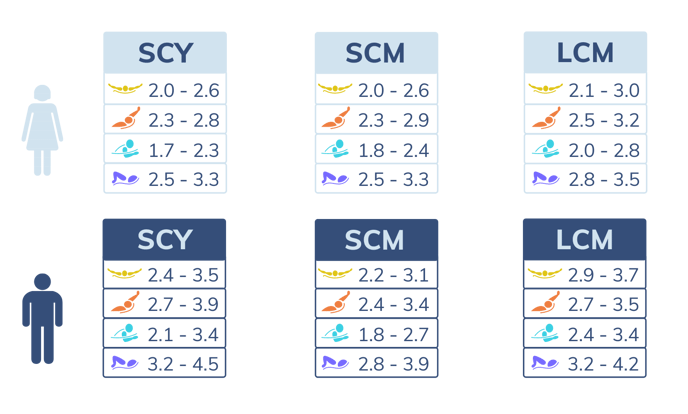Stroke Index
Find out what Stroke Index is, how it's measured, and what a good score is. You might also learn how to improve it!
What is Stroke Index?
The Stroke Index is a measure of a swimmer’s overall stroke efficiency
How is it measured?
Stroke Index is measured as a calculation where a Cycle Multiplier is used to convert distance per stroke into distance per cycle.
Speed x DPS x Cycle Multiplier
- For Freestyle and Backstroke, the multiplier is 2 (2 strokes = 1 cycle)
- For Breaststroke and Butterfly, the multiplier is 1 (1 stroke = 1 cycle)
What is a good Stroke Index?
A good Stroke Index is very dependent on the goal of the swimmer. For a distance swimmer, or someone with a longer wingspan, the goal would be to achieve a higher Stroke Index, because it means the strokes are more efficient: the swimmer is going faster (Speed) and farther per stroke (DPS). Conversely, for a sprinter or a swimmer with a smaller frame, a higher Stroke Index might not be the best goal post, as a high Stroke Rate and short DPS may in fact get them down the pool faster.
Typical Ranges
Stroke Index is a simple arbitrary number, so there is no unit to associate with it. Check out the chart below to see where you land compared to the typical ranges for your preferred stroke and pool length.

How to Improve Stroke Index?
Since Stroke Index is a culmination of the other performance metrics, it can be used to determine how changes in other areas (based on other performance metrics) affect a swimmer’s overall efficiency.
Find the optimal balance between Speed and DPS to achieve the highest stroke index without losing overall time. This can give the swimmer a target speed and DPS per lap in any given stroke or distance.
